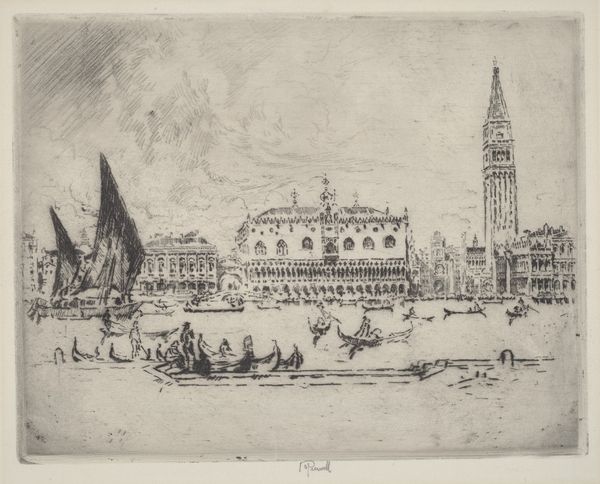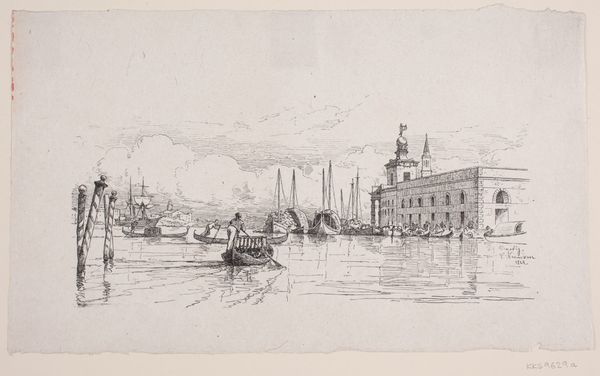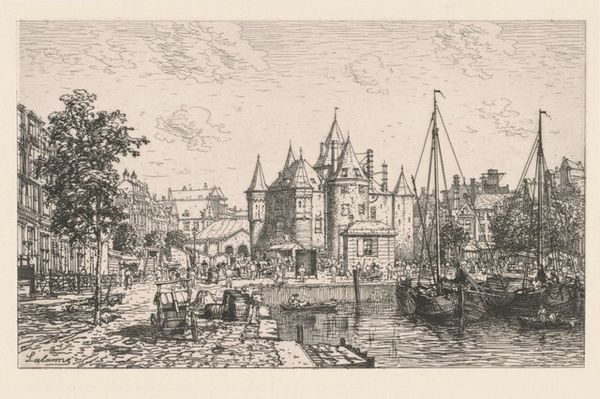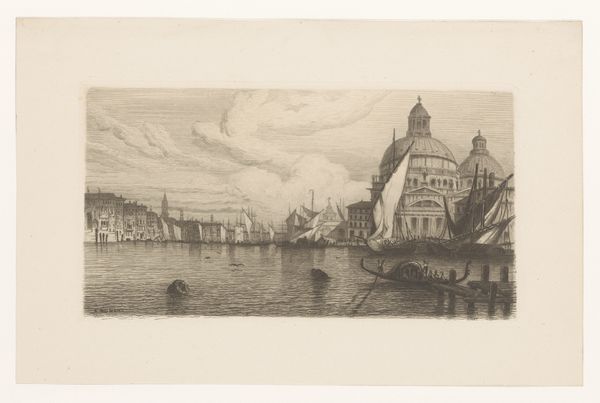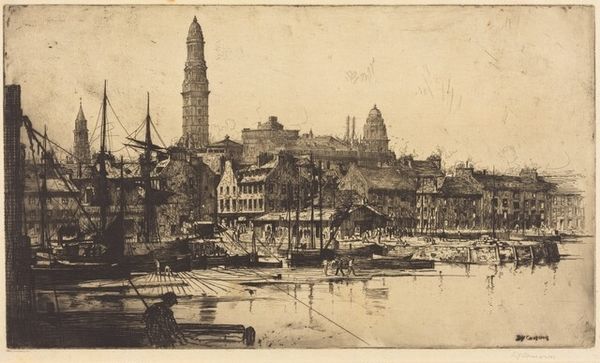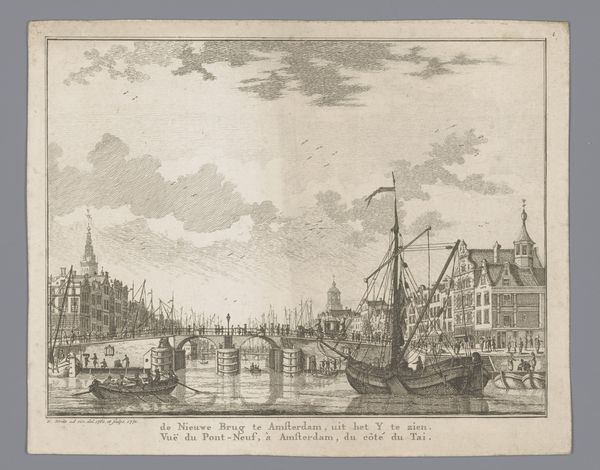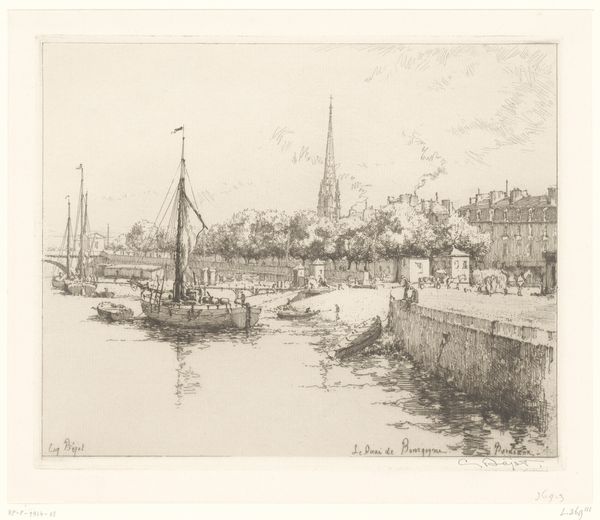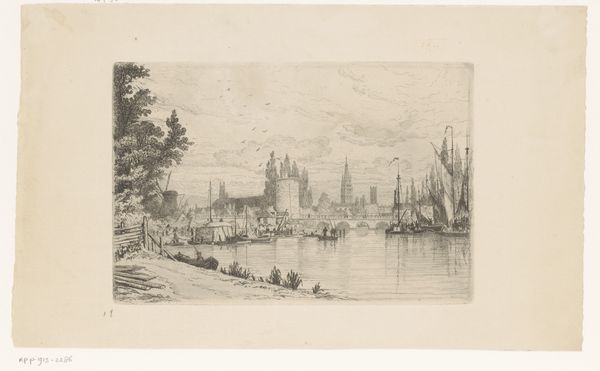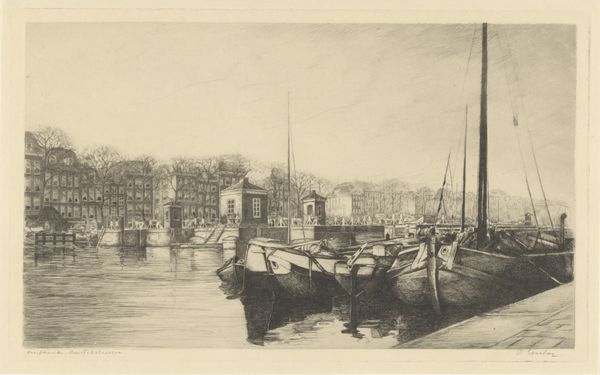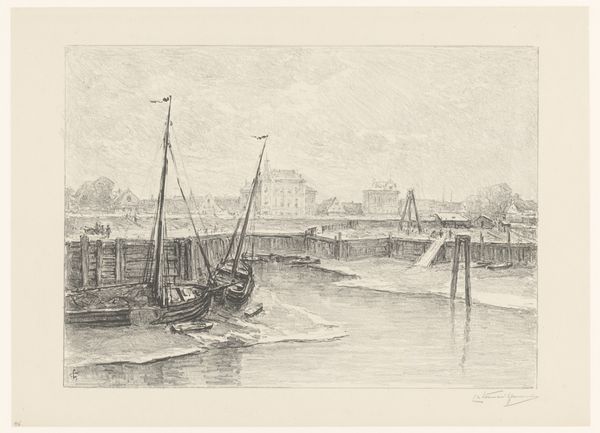
Dimensions: image: 13.7 × 21.8 cm (5 3/8 × 8 9/16 in.) plate: 16 × 24 cm (6 5/16 × 9 7/16 in.) sheet: 24.8 × 35.4 cm (9 3/4 × 13 15/16 in.)
Copyright: National Gallery of Art: CC0 1.0
Editor: This is "Tour de Montalban, Amsterdam" by Maxime Lalanne, etched in 1884. It feels like a nostalgic postcard, you know? The detail is incredible, especially in the tower. What story do you think it's trying to tell? Curator: It’s interesting you say postcard; Lalanne was working within a tradition of topographical views, but elevating it. Consider the surge of urban development at the time. Artists like Lalanne, by documenting these cityscapes, actively shaped public perception of urban identity. How do you think his choice of etching contributes to this sense of nostalgia? Editor: Because etching feels old somehow? Less…crisp? Like a memory instead of a photo. Curator: Exactly! Etching, unlike photography, allowed for selective detail and subjective interpretation. He wasn't just recording a scene; he was curating a specific *feeling* about Amsterdam. Also, the 'Tour de Montalban' itself – once a defensive structure – what do you think its depiction signifies within a rapidly modernizing Amsterdam? Editor: That's an interesting point; maybe it’s presented as a reminder of the city’s resilience? I suppose highlighting older structures frames the change in a positive light. Curator: Precisely. Its inclusion becomes a way of legitimizing the new while acknowledging the past. It underscores the city’s long-standing position as a center for trade, and its unique ability to remain steadfast amidst the waves of modernization. It wasn't just a picture, it was public image-making. Editor: I see it now. I was so focused on the aesthetic I completely missed the potential social commentary. Curator: Art often serves such double duty. We've both seen a lot more in this picture.
Comments
No comments
Be the first to comment and join the conversation on the ultimate creative platform.
